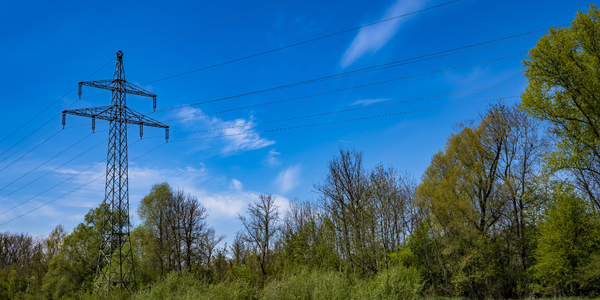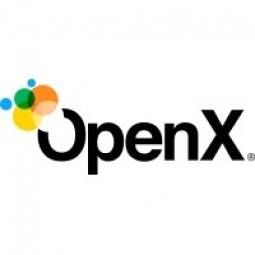公司规模
Large Corporate
地区
- Europe
国家
- United Kingdom
产品
- OpenX Ad Exchange
- OpenX’s Bidder technology
技术栈
- Programmatic ad trading
- Digital advertising technology
实施规模
- Enterprise-wide Deployment
影响指标
- Revenue Growth
- Customer Satisfaction
技术
- 平台即服务 (PaaS) - 连接平台
适用功能
- 销售与市场营销
用例
- 需求计划与预测
服务
- 云规划/设计/实施服务
关于客户
Condé Nast 是一家顶级媒体公司,以向全球最具影响力的受众提供最高质量的内容而闻名。该公司通过其 19 个品牌和媒体吸引了超过 1.64 亿消费者:Allure、Architectural Digest、Ars Technica、Bon Appétit、Condé Nast Traveler、Epicurious、Glamour、Golf Digest、GQ、Pitchfork、Self、Teen Vogue、The New Yorker、Vanity Fair、Vogue、W 和 Wired 等。该公司屡获殊荣的内容通过印刷版触达 8400 万消费者,通过数字版触达 3.67 亿消费者,通过社交平台触达 3.79 亿消费者,每月视频观看次数超过 10 亿次。
挑战
Condé Nast 意识到数字广告支出正在向程序化交易转变,因此需要通过程序化方式在其在线出版物中提供库存。挑战在于实施程序化交易并简化库存销售流程,同时又不损害其核心直销主张。目标是以最优价格出售库存,而不是出售每一次展示。另一个挑战是确保品牌安全和广告质量。Condé Nast 对合作的广告商非常挑剔,广告必须从编辑和商业角度都有效。该公司需要在程序化交易时实施保障措施,以确保广告能够提升读者的体验,而不是打断读者的体验。
解决方案
Condé Nast 与 OpenX 合作,充分利用其作为值得信赖的广告交易平台的既有地位。OpenX 的广告交易平台让 Condé Nast 能够以尽可能高的价格以程序化方式出售部分库存,同时还能同时保持其直接销售流程,避免削弱与直接购买广告商的关系。OpenX 的技术使 Condé Nast 能够在程序化交易时实施品牌安全措施。通过使用特定品牌或类别的白名单和黑名单,Condé Nast 可以指定哪些广告商适合各个网站。OpenX 的质量控制内置于其广告交易平台的基础中,使发布商能够系统地屏蔽单个买家、创意和内容类别。
运营影响
数量效益

Case Study missing?
Start adding your own!
Register with your work email and create a new case study profile for your business.
相关案例.
Case Study
Pepsico's Transformation to Smarter Sales Forecasting with Designer Cloud
PepsiCo, a global consumer packaged goods company, faced a significant challenge in calibrating sales forecasting to supply the right product quantities to its retailers. The sales forecast incorporated a variety of data, including warehouse data, store stock data, and promotional forecast data, all of which were provided by retailers in different file formats and delivered using various methods. The primary challenge was the speed of preparing a sales forecast. With the existing Microsoft Access and Excel-based processes, the time required to prepare this data was so extensive that analysts could only leverage it once a month or not at all. This inefficiency risked under or oversupplying retailers, potentially impacting PepsiCo's business operations and customer relationships.

Case Study
Gexa Energy and AutoGrid's Innovative Demand Response Programs in ERCOT
Gexa Energy, a leading retail electricity provider in Texas, was seeking to introduce new demand response programs for its commercial and industrial customers in the Electric Reliability Council of Texas (ERCOT) market. The challenge was to provide a platform that would allow these customers to lower their energy bills by adjusting their energy consumption during peak energy demand or high wholesale electricity prices. The solution needed to be intelligent, scalable, and offer both manual and automated options for adjusting energy consumption. The demand response programs needed to include Emergency Response Service (ERS), Real-Time Price Response (RTPR), and 4 Coincident Peak (4CP).

Case Study
ZettaNet's Agile Juniper Network Meets Booming Digital Demand in Australia
ZettaNet, a privately-held company based in Perth, Australia, was facing a significant challenge due to the exponential demand for enterprise network, data center, and cloud services in the region. The company's business growth necessitated an upgrade of their core network to meet the increasing bandwidth requirements of their customers. The customers, which primarily include managed service providers, were demanding 1 Gbps connectivity between locations. These service providers then deliver network, data center, cloud, and voice services to a diverse range of customers including local businesses, schools, hospitals, residential communities, and government offices in Western and Southern Australia. The challenge for ZettaNet was to meet this high-capacity network services demand while maintaining profitability.
Case Study
Procter & Gamble Implements Terra Technology's Demand Sensing for Improved Forecast Accuracy
Procter & Gamble (P&G) faced significant challenges in accurately forecasting short-term demand for their consumer products. Their existing 24-month forecast provided a good overview for monthly or weekly production, but it was insufficient for the immediate needs of supply chain planning and manufacturing teams. These teams required a short-term forecast to plan production effectively and avoid 'fire-fighting' practices. P&G needed a solution that could provide accurate short-term demand forecasts to ensure agility and flexibility in manufacturing, especially for products with very short production and order lead times. The company explored various solutions but found that most big software companies lacked the agility to meet their specific demand sensing needs. Terra Technology's Real-Time Forecasting, later known as Demand Sensing (DS), emerged as a promising solution due to its specialized focus on consumer packaged goods (CPG) demand planning and forecasting.
Case Study
MARS Incorporated: Leading a Global Digital Transformation
MARS Incorporated, a multinational manufacturer, faced significant challenges in digitizing and standardizing processes across its mid-markets globally. The company's reliance on legacy solutions necessitated continuous, time-consuming upgrades and made data compilation and comparison across different regions and business units difficult. Excel spreadsheets were extensively used for forecasting in smaller markets, leading to disconnected processes, siloed working environments, and increased risk of data inconsistencies and inaccuracies in demand forecasting. MARS also struggled with a lack of visibility across its midmarket footprint, scattered critical data across various systems and spreadsheets, a low degree of automation, and insufficient statistical analytics for demand planning. The absence of a standard process for demand planning made it challenging to consolidate KPIs and gain a comprehensive view of demand trends and supply chain performance.

Case Study
Enterprise AI for Demand Forecasting and Production Scheduling in Global Agribusiness
A global agribusiness and food manufacturer, producing over 80 million pounds of food products per year across eight production lines, faced significant challenges in demand forecasting and production scheduling. The company's only customer, a global retailer, exhibited highly variable demand, leading to discrepancies with the manufacturer's weekly demand forecast. Traditional demand forecasting solutions, based on statistical algorithms, were unable to cope with the short lead times and daily sales orders due to the short shelf life of food products. This resulted in unfulfilled customer orders. Additional rule-based solutions procured to improve production scheduling also failed to optimize schedules and significantly improve manufacturing operations.







